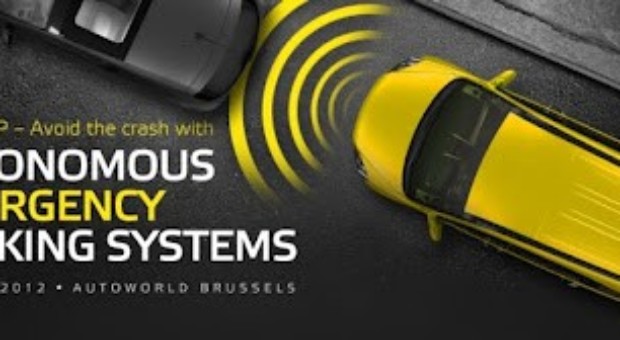
Autonomous Emergency Braking To Be Made Compulsory Within Two Years
The European Commission have announced that new regulations are to be brought in by the year 2014, that will mean all new cars sold will have to be fitted with Autonomous Emergency Braking systems (AEB), by law.
This is one of the biggest safety breakthroughs in car technology in recent years and has also been hailed as a potentially great boost for the flagging economy across Europe.
The system will be available in all commercial vehicles from November 2013, but drivers of passenger cars will have to wait a further few months until 2014 until it is available for them too.
Autonomous emergency breaking
This unique system uses a mixture of radar, video and laser technology to measure the distance between vehicles on the roads and pedestrians on pavements.
The information gathered from this, combined with the speed the vehicle is travelling at, will be used to make a calculation to estimate the trajectory and warn the driver of potential inherent danger and prepare them to take necessary safety action as required.
If the driver fails to heed the warnings, then the braking system itself will apply its own set emergency measures by priming the brakes. It essentially works like an emergency stop would and deliberately forces the driver to slow down safely and securely.
A system already in use in some cars
Some car manufacturers are already employing this system in specific brands of new cars coming off the production line. Models from Audi, Volkswagen, Mercedes-Benz, Volvo and Honda use Autonomous Emergency Braking as standard, but according to figures released from Euro NCAP these only amount to a total of twenty one percent of total vehicles on the road or being manufactured for purchase at the current time. There is evidently a long way to go before all other car manufacturers catch up, but signs are positive.
A great leap forward for safety
The use of this technology may mean a substantial cut in road traffic accidents. Initial tests that have been conducted by the European Commission have already shown that as much as twenty seven percent of such collisions may well be cut out completely, which is a major breakthrough and one that has been welcomed by Phillipe Jean, who is the Head of the European Commission’s Automotive Department.
Alongside the obvious road safety benefits it is hoped that the use of this system will also decrease the number of drivers and passengers making whiplash claims after accidents, as the act of braking more slowly will mean that drivers are not required to come to as sudden a halt, therefore meaning that sudden jolts to the body are avoided.
It may also prove to be a great money saver too, as congestion caused by road traffic accidents may also be cut which could save hundreds of millions of pounds across the whole of Europe. Estimates suggest that hundreds of millions of pounds could be saved from treating whiplash injuries alone once this system comes fully into effect.
These come not just from hospital treatment requirements but the knock on effects of accidents such as repeated time off work, sick notes and insurance pay outs.
According to a study carried out in the United Kingdom, around three quarters of all road traffic accidents happen at speeds of around or less than thirty two kilometres per hour.
The Autonomous Emergency Braking system will be trying to target these figures and improve them, thus increasing all round road and driver safety.
In use fully by 2014
There has been initial criticism that car drivers will have to wait for up to another two years before they can buy this system in their new vehicles, whilst commercial vehicle drivers will get it beforehand.
It is hoped, however, that the Autonomous Emergency Braking System will be futher trialled, tried, tested and improved during this period, meaning that anyone seeking to buy a new car outright or via a car loan from a dealer like Car Loan 4u will be able to purchase a car with this latest safety assured technology in place.
It will hopefully mean a much safer and reliable all round driving experience for everyone which can really only be a good thing in the long term.
For more information on the topic, you can read here.
(Visited 34 times, 1 visits today)





















